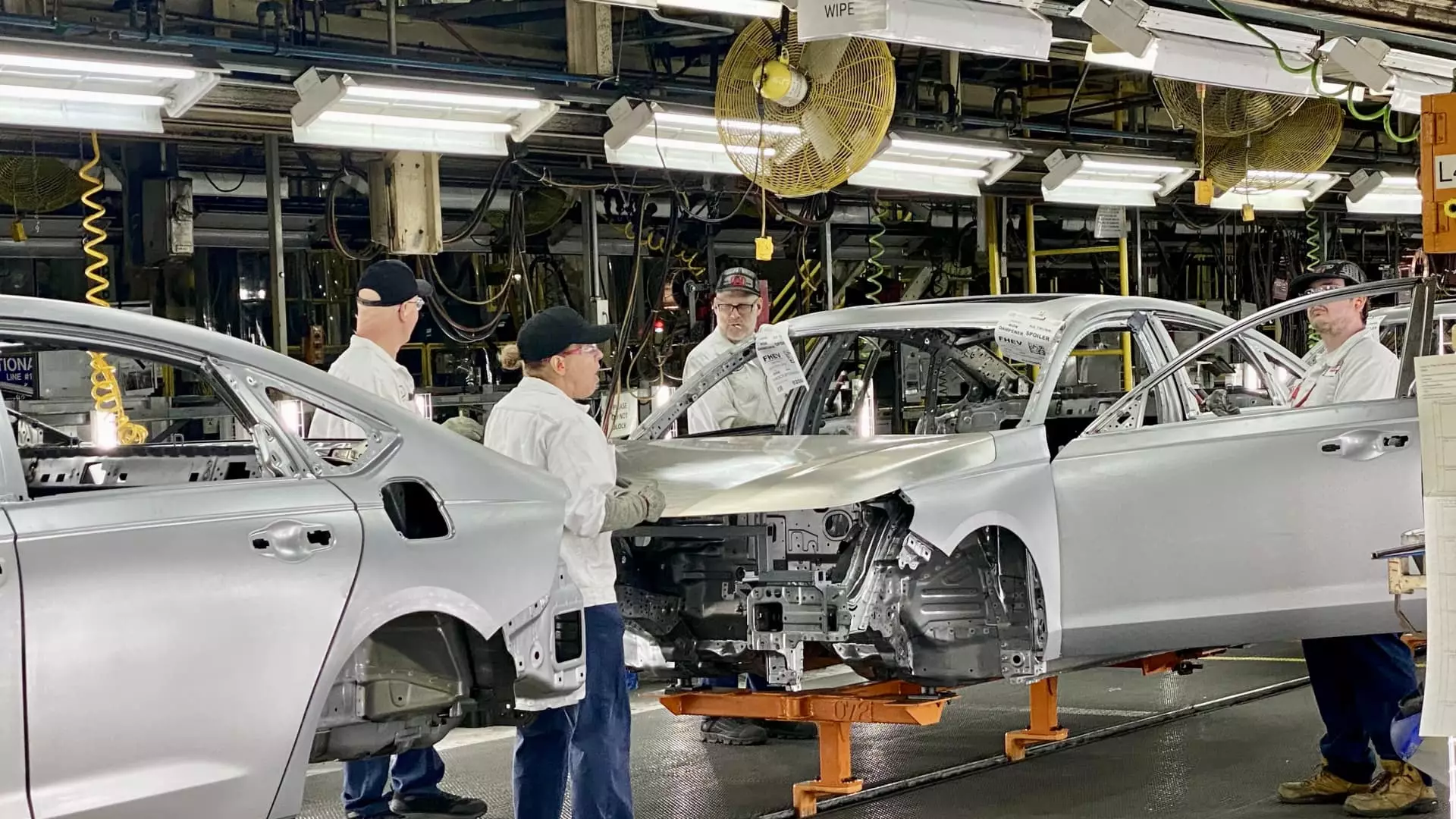In a historic move that underscores its commitment to the future of electric vehicles (EVs), Honda Motor Co. is investing over $1 billion in its Ohio facilities to establish a cutting-edge manufacturing hub. This considerable financial injection, initially announced at $700 million, is emblematic of a significant shift in Honda’s production strategy, which has traditionally favored its home base in Japan for groundbreaking manufacturing initiatives. By choosing Ohio, Honda is not only enhancing its operational capabilities but also positioning itself as a critical player in the rapidly evolving automotive landscape centered around electric mobility.
The centerpiece of this transformation is the installation of six colossal “giga presses,” a production method popularized by Tesla, which allows for the creation of large vehicle components through high-pressure die casting. This technique enables Honda to streamline production, reduce costs, and, most importantly, enhance efficiency in the manufacturing of electric vehicle parts, specifically battery cases. This strategic investment will facilitate the simultaneous production of conventional vehicles, hybrids, and EVs on the same assembly line, showcasing Honda’s integral approach to transitioning toward an electrified future.
The facilities in Marysville will play a pivotal role in Honda’s future, serving as the heart of its global EV production network. Mike Fischer, Honda’s North American lead for battery-electric vehicle projects, has noted that the Ohio operations are setting a “global standard for EV production,” emphasizing that this initiative redefines not just the technology involved, but also the processes and workforce dynamics necessary for modern manufacturing. With a projected annual production capacity of around 220,000 vehicles, the Marysville plant is poised to become a flagship site that reflects Honda’s ambitious goals and dedication to innovation.
The recent increases in investment have coincided with broader governmental initiatives aimed at strengthening domestic manufacturing, particularly in light of geopolitical uncertainties such as potential tariff escalations on imported vehicles. Honda’s swift response signifies not merely agility in corporate strategy, but also a recognition that the future of automotive manufacturing is increasingly intertwined with local investments and resilient supply chains.
Expanding Product Offerings and Capabilities
While Honda was somewhat lagging behind competitors in the EV market, its upcoming models promise to alter that narrative. This includes the highly anticipated all-electric Acura RSX crossover, the first EV to roll off Honda’s Ohio assembly line. The company aims to bolster its portfolio with additional electric vehicles, including the Honda 0 SUV and Honda 0 Saloon prototypes showcased at CES. These strategic product launches aim to capture an expanding consumer base increasingly interested in electric mobility.
Honda’s investment in electric vehicle technology isn’t limited to vehicle assembly; the company is also developing battery production capabilities that leverage advanced manufacturing techniques. The Anna, Ohio engine facility, which has grown considerably since its establishment, will be crucial for producing aluminum battery packs through the deployment of high-pressure die casting machinery. This innovative approach may revolutionize how Honda manufactures components, aiming to combine efficiency and sustainability.
The overarching theme of Honda’s investment in Ohio is a profound reimagining of manufacturing processes. Honda’s introduction of nearly 60 flexible manufacturing “cells” for battery assembly marks a departure from traditional assembly lines. This new design minimizes potential disruptions by allowing various assembly processes to occur in parallel, thus preventing slowdowns on the main line. This forward-thinking layout not only enhances efficiency but also embodies Honda’s agile response to the demands of modern automotive production.
As part of this, Honda is committed to a vision of carbon neutrality and zero-emission production by 2040. Unlike many competitors who have scaled back similar targets amid industry uncertainties, Honda remains steadfast in its plans to become a leader in both environmental sustainability and technological innovation. By reimagining its manufacturing processes and adopting advanced technologies, Honda is not only setting ambitious ecological targets but creating a manufacturing model that prioritizes environmental responsibility.
Honda’s bold investments signal a significant chapter in its storied history, one defined by agility, resilience, and transformation. By positioning its operations within the U.S. landscape and focusing on the production of electric vehicles, Honda is not merely responding to market trends; it is setting an example for an entire industry at a crucial juncture in automotive evolution. The shift encapsulates Honda’s aspiration to redefine the automotive landscape, melding its legacy of innovation with a firm commitment to a sustainable future for generations to come. As the automotive world watches closely, the success of these undertakings in Ohio could very well serve as a blueprint for other automakers navigating the complex transition to electric mobility.

